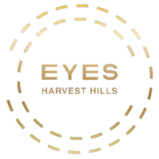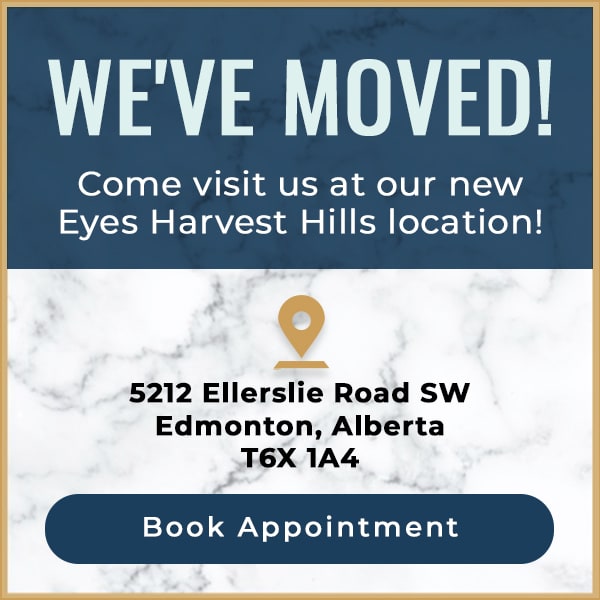Nearsightedness and farsightedness, or myopia and hyperopia, are the two most well-known refractive errors.
When your vision is myopic, your distance vision is out of focus, but you have clarity in your near vision. In contrast, those with hyperopia experience blurry vision when looking at close objects but have sharp vision at a distance.
But why does this happen? Light rays enter the eye and focus on the retina in a perfect eye. For those with myopia, an atypically shaped eyeball or corneal curvature refracts light, so it doesn’t meet the retina.
Comprehensive eye exams test for refractive errors and identifies the best corrective lenses to restore visual acuity at all distances. In children’s eye exams, we can identify the early stages of myopia and take steps to slow its progression before it becomes too advanced.
What Is Myopia?
Myopia, or nearsightedness, is a common vision problem affecting millions of people in which objects at a distance appear blurry and out of focus. If the eyeball is too elongated or the cornea is too curved, light falls short of the retina when it enters the eye rather than focusing on the retina directly. This causes distorted vision at a distance, but near vision remains clear.
Most often, myopia begins to emerge in childhood and develops as the eyes grow. However, in some cases, adult-onset myopia can develop due to environmental conditions.
- Pseudo myopia is temporary myopia that occurs following overuse of the eyes’ focusing muscles after a prolonged period of near work
- Night myopia can occur in low-light conditions only
- Medical conditions like diabetes can elicit myopia in adults
What Is Hyperopia?
Hyperopia, or farsightedness, is a less common refractive error in which near objects appear blurry, but distance vision is sharp. It occurs when the eyeball is too short or the cornea isn’t curved enough, so light rays focus behind the retina when they enter the eye.
Due to untreated hyperopia, children can develop strabismus, crossed eyes, amblyopia, or lazy eye.
Similarities: Myopia vs. Hyperopia
The primary similarity between myopia and hyperopia is that they both occur when the eyeball’s shape or curvature of the cornea prevents light from centring on the cornea. They can cause common symptoms, such as:
- Eye strain
- Squinting
- Headaches
- Blurry vision
While most refractive errors manifest in childhood, environmental factors, such as blood sugar instability or hypertension, can lead to vision problems in adulthood that can heighten the risk of developing more severe eye conditions.

Myopia & Hyperopia in Children
Children may have vision problems without realizing it. Their behaviours and mannerisms can indicate to parents and teachers that there are problems with their vision. Some behaviours that can signify refractive errors include:
- Squinting
- Lack of awareness of distant or near objects
- Sitting unusually close or far from the television or screens
- Holding books too close or far from their face
- Rubbing their eyes
- Frequent blinking
Undetected refractive errors can sometimes cause a misdiagnosis of ADHD, behavioural issues, and learning difficulties. An annual children’s comprehensive eye exam can identify early signs of refractive errors and address them to support their academic performance and leisure activities.
What Is Myopia Control?
With advanced diagnostic and treatment technology, controlling myopia progression in children and adolescents is possible. By slowing myopia as your children grow, we can help keep their corrective prescription low and minimize their risk of developing severe myopia-related eye conditions.
Charting your child’s myopia progression isn’t a guessing game. Using cutting-edge technology, we can precisely measure the axial length of their eye over time to produce a detailed map of their myopia.
The axial length is the measurement from the back of your eye to the front of the surface, from the retina to the cornea. Myopia progression in children develops from eye elongation as they grow, and myopia control measures aim to slow the elongation of the eye to reduce their myopia strength.
Using optical low-coherence interferometry (OLCI) technology, the MYAH system emanates a low-coherence light beam into the eye to acquire an accurate measurement of axial length. The light beam reflects off various ocular structures to create their eye pattern.
Once we have precisely measured your child’s axial length, we can personalize a myopia control treatment plan tailored to the severity of their nearsightedness and its progression rate.
Help Your Child Manage Their Myopia
At Eye’s on 34th, we can detect myopia in your child’s eye exams and recommend a myopia control treatment to help slow their eye growth. Book an eye exam to thoroughly assess your child’s eyes and discuss myopia control options to preserve your child’s sight into adulthood.




